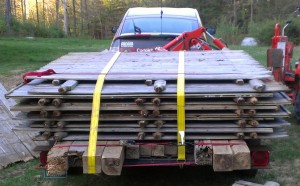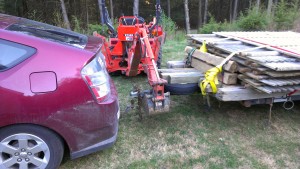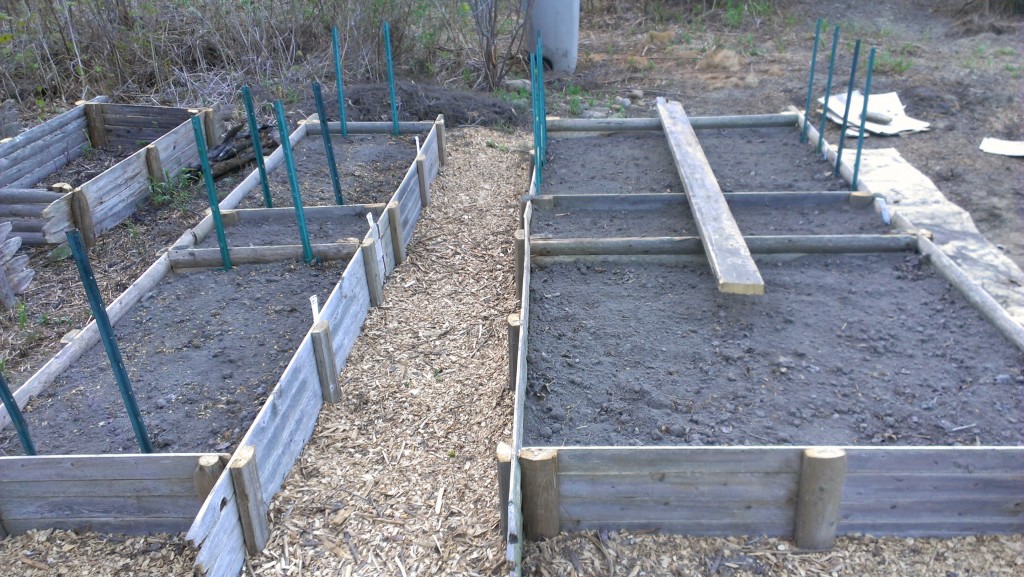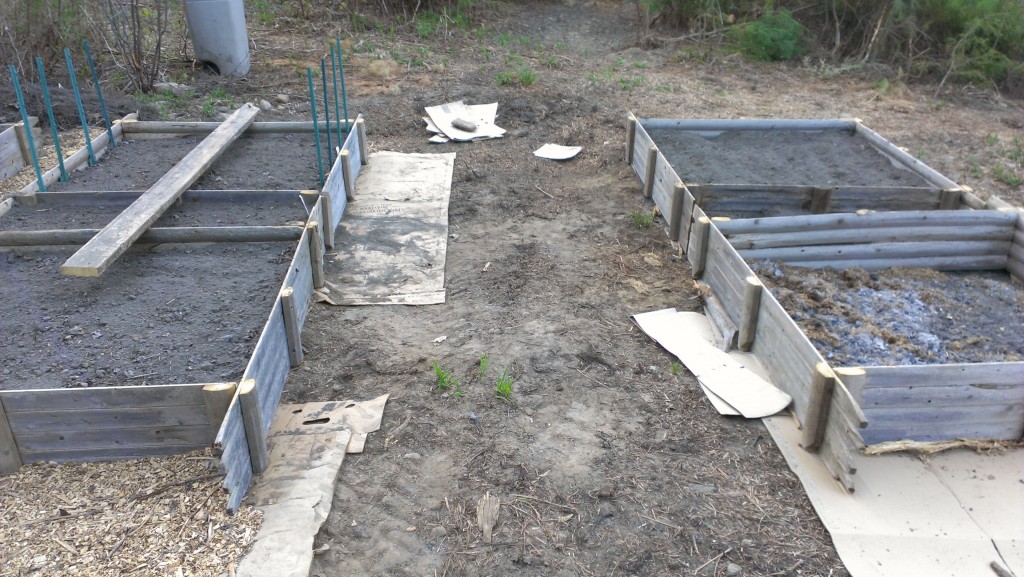Grandpa Gove had some of his fence replaced recently. It is the kind of job where a lot of the panels are in fair condition, but you really need to replace a whole side at once. So there are a lot of fairly good panels and even some posts that could be reused. Rather than pay to dispose of all the fencing, I’ve been bringing them to Gnome Knoll. Here is the second load on the trailer. It is amazing how well the Prius tows the load, and still gets about 30 mpg.
The problem is that the fence heavy, and loaded a bit forward for security, so that the hitch is too heavy for me to lift off the car. Last time I used the tractor bucket to push down on the back of the trailer. That worked, but not real well. So this time I just carefully used the tractors muscle directly. This was much easier and now the hitch is on a block off the ground.
So what happens to all those panels? We really don’t need that much privacy. They could be used to keep out deer, but then they would need strong posts to keep them up against the wind. It is easier to use mesh deer fencing which doesn’t require such strong posts.
At the same time, I had been struggling to figure out how to cheaply make raised beds for the garden. There were lots of old logs piled up in places from the previous owner, but when I went to move them it turned out those were all too rotted to use. Necessity being the mother of invention: I’m making raised beds out of the fence panels! Some cuts with a sawzall, some nails and a hammer and bingo, raised beds.
Well, it does require a little bit of forethought as well. For instance, the panels are all used back side out because while it might be prettier the other way, this way the nails are all through the thicker wood that is outside bed and will dry out better. With other wooden raised beds, I’ve found the weakest point is the joints where they are nailed together. Those seem to fall apart well before the rest of the side has rotted out. We’ll see if this works better.
One also has to be careful about spacing of the raised beds. With past beds, I was trying to squeeze them in too close together and made it too hard to work in them. This time I am going with a measured two foot spacing. I have also allowed a wider six foot space for the tractor to be able to get through if necessary. I will be putting many of the various recycled portable planters into that wide space so that it won’t be wasted most of the time when the tractor doesn’t need to go through.
Now with today’s load I have a lot more fence panels to make a lot more raised beds to grow a lot more stuff. All this work is making me hungry. Hurry up and grow, food.



